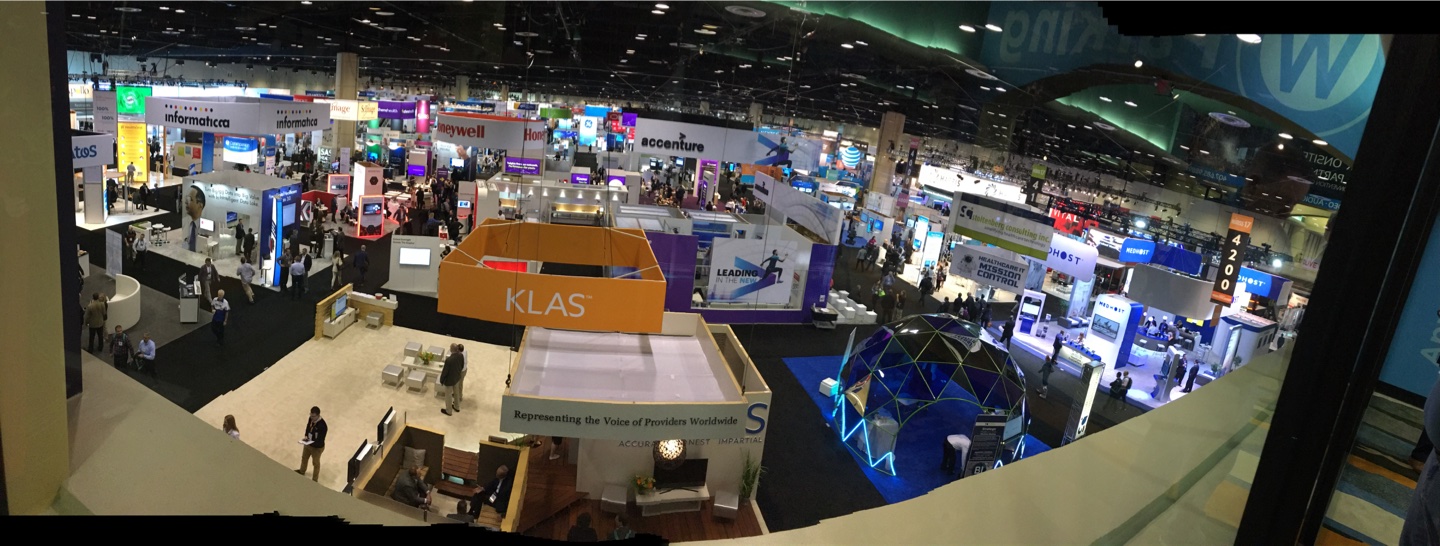
- Making EMRs easier to use and more interoperable is still a big unmet need. Interoperability: continued push for the holy grail of interoperability across various EMRs and other relevant applications. FHIR is still being talked about as the potential answer, but it will take some more time for it to deliver. In the meantime, independent vendors like Sansoro Health are enabling this interoperability by creating a common data model of their own. Usability: perhaps more so than interoperability, ease of use of EMRs by clinicians is a bigger concern. There is significant interest in using voice activated interface like Siri and Alexa.
- Clinician Burnout is at an all time high! Need more “joy” in providers’ life. Providers, especially the primary care doctors, are overstretched with difficult to use EMRs, value based care requirements, clerical and clinical paperwork, data overload, etc. Need much better technology solutions that are easier to use by providers, not just by patients. Across the healthcare system, labor is 50% of the system costs. Need to use technology to make this more efficient and less labor intensive.
- Collaborative Precision Medicine (based on genomic sequencing). Tailoring medication based on pharmacogenomics of patient seems to be particularly effective for certain diseases like cancer. PGx testing is now becoming cheaper, less than $100 per patient. But the data needs to aggregated worldwide to create meaningful clusters, with enough data points in each cluster. “Today only 4% of data is currently available to a research team, remaining 96% locked other individual research institutions!” Need a secure federated cloud data storage that is available to all researchers. Genetic sequencing/technology is evolving faster than Moore’s law, making precision medicine attainable in clinical setting. Gleevec discovery, which was fast tracked by FDA, and was a Time magazine cover story, is great example.
- Big Data + AI (Machine Learning, Predictive Analysis) use is becoming more mainstream – several compelling case studies presented. “AI is the rocket, big data is the rocket fuel.” AI techniques helping deal with the clinical information overload. After all, healthcare is one of most data rich industries – EMR data, images, digital health data (e.g. Fitbit), research data, etc. The rate of doubling of medical knowledge/data is increasing, e.g. just look at the trends in new FDA drug approvals. Statewide Health Information Exchanges, e.g. Maine’s, with patient data aggregated from various health systems really helps by providing more complete patient data for meaningful analytics use. Using AI + Big Data techniques to make clinician’s more efficient and reduce errors, e.g. ultrasound image processing w/ machine learning techniques to make better diagnosis and/or provide second opinion. 30% of healthcare costs are in administrative area. AI techniques can also help reduce these costs.
- “Unsupervised” form of machine learning has the promise of really accelerating scientific progress. So far, the hypothesis driven approach has been the rate-limiting step. Unsupervised learning can help uncover patterns in data (e.g. best practices) that are otherwise not visible. Also, it can offer candidate hypothesis that can then be more rigorously tested with data. Don’t let the risk of some bad data hold you back. Get started. And, keep cleaning the data as you make progress.
- HIPAA & PHI requirements don’t restrict leveraging cloud computing resources and offshore subcontracting partners. While HIPAA requirements for handling PHI data in context of various mobile apps and subcontractor organizations, can appear complicated, there is nothing in HIPAA that restricts keeping PHI data offshore, so long as Business Associate (BA) agreement is in place with subcontractors. Just like other technology subcontractors, a cloud service provider should be treated as a BA.
- “APIs are an innovation force multiplier.” While rest of the digital economy (e.g. Amazon + UPS shipping/tracking use case) has been using (open) APIs to allow interoperability, healthcare industry is just figuring this out. For example, Sansoro Health is using this approach to enable cross EMR integration. FHIR will eventually solve this problem, but it will take a while to be available. It is following consensus driven standardization process which is inherently slow.
- DICOM + non-DICOM images. With increase of images from mobile phones and other sources, non-DICOM image content is increasing at a rapid pace. Use XDS to cover this non-DICOM image content.
- While the pharma companies (Merck, Pfizer, etc) were conspicuously absent from this conference, mainstream IT vendors had a dominating presence, at least on the exhibit floor space. IBM, HP, Microsoft, Lenovo, Oracle, VMWare, you name it.
- IBM Watson was everywhere. The purpose of AI techniques is not “Man vs. Machine” but “Man + Machine”. It is about allowing a physician to do what they are good at doing and assist them with available data. “IBM Watson is still only a 2 yr old infant, but it has parents like MD Anderson and Mayo Clinic to learn from!”
- Other key ideas that were pervasive
- Population Health
- Value Based Care/Payments – here to stay
- Telemedicine – seems to be quite effective in various settings
- Blockchain – seems promising with a variety of use cases














